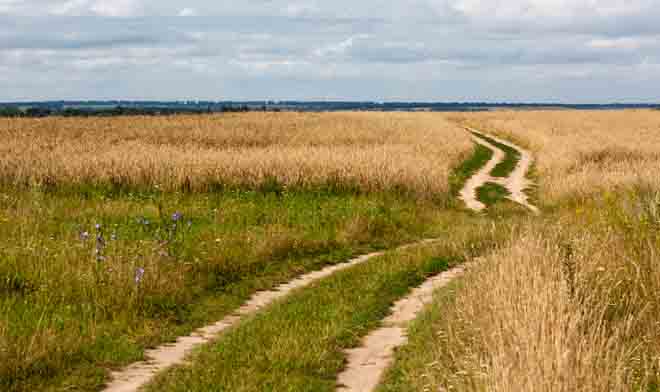It’s time to have an important conversation about food security and climate stability, and a new report by Center for Food Safety’s Cool Foods Campaign provides a constructive tool for this exchange. While two high-level reports — the IPCC’s AR5 and the U.S.’ National Climate Assessment – set to be released later this spring will address food security for scientific and policy audiences, the new Cool Foods report, Food & Climate: Connecting the Dots, Choosing the Way Forward, was written with the general public in mind.
The Food & Climate report explores three keys points: how agriculture, and by extension food security, is being and will be affected by extreme weather; how the current food system exacerbates climate change; and how scaling organic, agroecological systems can play a fundamental role in mitigating climate disruption.
Climate change is likely the greatest challenge humanity has ever faced, and since food connects us all, safeguarding the viability of food production holds enormous promise as an organizing tool for climate action. Nevertheless, not everyone has understood that the food system is vulnerable and that we can, and must, take immediate steps to make it more resilient.
While organic, agroecological agriculture was once viewed as “alternative”, in the face of a changing climate it has unquestionable advantages over the dominant industrial food system, which externalizes many of its true social and environmental costs.
Organic, agroecological systems use 30-50% less fossil fuel energy than industrial farms. They are far less dependent on fossil fuel derived inputs including synthetic fertilizers upon which industrial agriculture relies heavily. These fertilizers are the largest single source of nitrous oxide, a greenhouse gas with a global warming potential 310 times that of carbon dioxide.
The new report states that “making soil health a central goal of agricultural policies worldwide will be essential for achieving global food and water security and mitigating climate change.”
- Food security: because soil fertility is essential for growing food.
- Water security: because healthy soils are able to filter and store precious fresh water.
- Mitigating climate change: because healthy soil is our largest terrestrial carbon sink.
We’ve mistreated soil around the world and allowed the carbon it stores to escape into the atmosphere. Organic, agroecological systems are best poised to build soil organic matter on a global scale. Doing this will remove carbon from the atmosphere and the oceans, where it is clearly harmful, and sequester or capture it in soil where it’s a necessity.
To connect the dots between food and climate and learn about the path to resilience, read the report here and join the conversation.
Diana Donlon is the director of the Center for Food Safety’s Cool Foods Campaign in San Francisco, California. Cool Foods is a consumer-education campaign that is bringing new voices and fresh solutions to the climate table. Lean more by joining Cool Foods on Facebook, Twitter, Instagram and Pinterest.
Join us for a Food & Climate “Tweet Chat” on Thursday, March 20
(5-6 pm EST; 4-5 pm Central; 2-3 PST). @CoolFoods #Foodclimatechat













